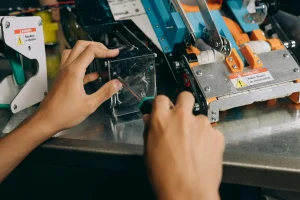The Engine Behind Industrial Progress
In the vast world of manufacturing, few sectors are as quietly essential as the machine tools industry. These are the machines behind the machines — the precision equipment that cuts, shapes, grinds, and finishes components for industries ranging from automotive to aerospace to electronics.
Recent market analyses reveal a powerful upward trend. In 2023, the global machine tools market was valued at nearly $60.63 billion. Looking ahead, it’s projected to reach $82.74 billion by 2028, reflecting a Compound Annual Growth Rate (CAGR) of 6.42%. This robust growth underscores not only the resilience of the sector but its increasingly critical role in the future of global manufacturing.
What’s Driving This Demand?
Several converging forces are fueling the surge. First, industrial automation has become a cornerstone of modern production, with companies seeking to increase output, improve precision, and reduce human error. Machine tools, especially advanced systems like Computer Numerical Control (CNC) machines, are central to this shift, offering unmatched accuracy and flexibility on the factory floor.
Second, the global push for innovation in key industries — particularly automotive, aerospace, and electronics — is raising the bar for manufacturing capabilities. Electric vehicles, lightweight aircraft materials, and cutting-edge consumer devices all require components crafted with extreme precision, driving demand for high-performance machine tools.
Emerging sectors such as renewable energy are also contributing to the momentum. As solar and wind energy systems scale up, manufacturers require specialized parts that can only be produced using the most advanced machine tools available.

Opportunities and Challenges Ahead
While the market outlook is bright, the industry is not without its challenges. One of the most pressing is the global shortage of skilled labor. As machine tools become more complex, companies need operators and technicians with advanced training to handle sophisticated machinery and software systems. Addressing this talent gap will be essential to sustaining growth.
Another hurdle is the pressure to innovate continuously. As global competition intensifies, manufacturers must keep pace with advances in materials, design, and digital integration to remain competitive. This includes embracing technologies like smart manufacturing and Industry 4.0 solutions that integrate machine tools into connected, data-driven production environments.
The Road Ahead for Global Manufacturing
The machine tools market’s projected growth to $82.74 billion by 2028 signals a transformative era for manufacturing worldwide. Far from being just background players, machine tools are emerging as key enablers of progress, allowing industries to meet new demands for customization, precision, and scalability.
As companies invest in advanced manufacturing solutions, the machine tools industry is poised to help shape the future, one precisely cut component at a time.
Source: Machine Tools Industry Report, GlobeNewswire, May 2025


